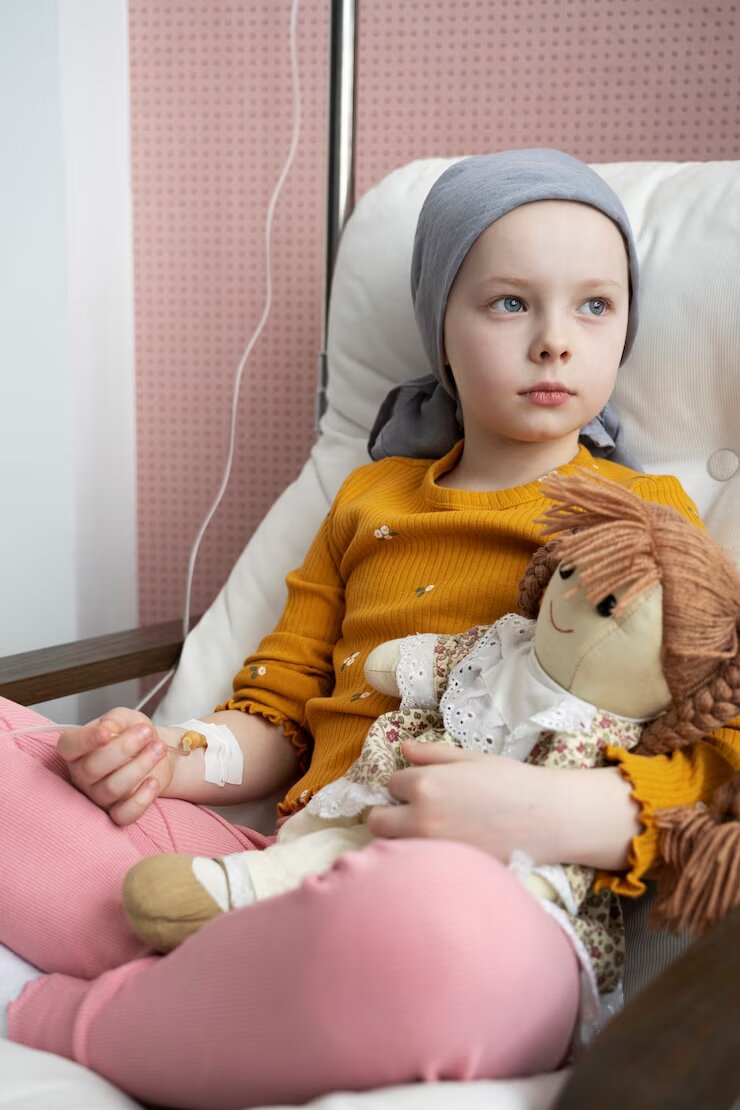Introduction
As a parent, hearing the news that your child has cancer is nothing short of devastating. You’re suddenly thrown into a whirlwind of emotions and questions about what comes next. In this blog post, we’ll take you through the journey from diagnosis to treatment and beyond for childhood cancer. We want to give you hope and reassurance that while it may be a tough road ahead, there are resources available to guide you every step of the way. Let’s dive in!
What is cancer?
Cancer is a disease in which cells in the body grow out of control. Cancer can occur in any part of the body, and can affect people of any age.
Cancer is caused by changes in genes that control how our cells function. These changes can be inherited from our parents or they can develop over time as we age. Most cancers are not hereditary.
There are many different types of cancer, each with its own set of symptoms and treatment options. The most common type of cancer in kids is leukemia, followed by brain tumors and lymphomas.
Cancer treatment often involves a combination of surgery, radiation therapy, chemotherapy, and/or targeted therapy. The type of treatment depends on the type and stage of cancer, as well as the child’s age and overall health.
The journey from diagnosis to treatment and beyond can be a difficult one for both kids and their families. At Seattle Children’s, we are here to support you every step of the way.
The journey from diagnosis to treatment
When your child is diagnosed with cancer, it can be a very scary and overwhelming time. There are a lot of decisions that need to be made and it can be hard to know what to do. The good news is that there are many resources available to help you through this journey. Here is a look at the journey from diagnosis to treatment and beyond:
The first step is usually to see your child’s primary care doctor or pediatrician. They will likely refer you to a specialist, such as a pediatric oncologist. The specialist will order tests, which may include blood tests, imaging scans, and biopsies. These tests will help them determine the type of cancer your child has and what stage it is in.
Once the diagnosis is confirmed, the next step is to develop a treatment plan. This plan will be individualized based on your child’s specific situation. It may include surgery, chemotherapy, radiation therapy, or a combination of these treatments. The goal of treatment is to kill the cancer cells and prevent them from spreading.
After treatment, your child will need to be closely monitored for any signs of recurrence. They will also need regular checkups and screenings for years to come. With proper follow-up care, most children with cancer go on to live long and healthy lives.
The challenges of treatment
The challenges of treatment for cancer in kids can be difficult to cope with. The side effects of treatment can be hard on young patients and their families. Treatment can last for many months, and even years in some cases. The child may have to miss school and activities with friends. It is important to keep the lines of communication open between the child, family, and medical team during this time.
Beyond treatment: life after cancer
It can be hard to imagine life after cancer, but it is possible. Here are some things to keep in mind as you move from treatment to survivorship:
1. Stay close to your medical team. They will be a great resource for any questions or concerns you have.
2. Make sure you get follow-up care, including regular check-ups and screenings. This is important to catch any problems early.
3. Be kind to yourself. You have been through a lot and need time to heal both physically and emotionally.
4. Reach out for support if you need it. There are many organizations and support groups available to help cancer survivors.
5. Live your life! Enjoy every moment, and don’t let cancer define you.
Conclusion
The journey from diagnosis to treatment and beyond for kids with cancer is long and complicated. While there are many options available, the best way to ensure that a child can receive the care they need is through early detection. Parents should pay attention to any unusual signs or symptoms their children may display, as well as discuss any concerns they have with their doctor. With the right support, treatment plans, and resources in place, children battling cancer can make it through this difficult time and come out on top.




